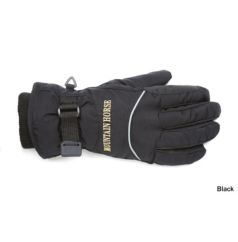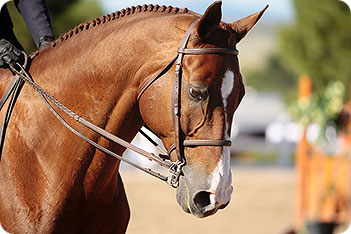This morning it was a delightful 7 degrees with a -13 windchill while I scraped my car with wind blowing up the back of my knee length jacket and right through my work skirt and fleece lined tights. It's winter, guys.
It came early this year, much to my chagrin. I can tell that winter is surfacing in other places too- my blog gets hits for clipping patterns and blanket questions. If you've found this page while searching, welcome! I feel the need to revamp and reiterate winter concerns every year, it seems like.
PSA:
Last winter I saw a "study" posted on FB on my barn's homepage that stated that horses don't need blankets because they inhibit the horse's hair from standing up in (approximately a bazzillion) different directions to keep them warm, etc. etc.
This is a hoax. Please don't spread that article around.
The Wardrobe:
Each of my girls has their own:
Fleece cooler - for post ride cool down and to prevent chills as they dry
Waterproof T/O sheet
Waterproof T/O blanket - Medium/220g with hood
Waterproof T/O blanket - Heavy/360g with hood
They also have a shared collection of liners and spares:
2 Schneiders blanket 180g liners
1 Rambo Optimo 100g liner
1 80g T/O blanket (no hood)
1 220g T/O blanket (no hood)
Right now, I think of sheets as a 1-2 year investment, as they wear them when it's sunny and they take a beating with rough fall and spring play, mud, etc. I also prefer that my sheets be as waterproof as possible, and waterproofing, no matter the quality, seems to diminish with the fabric quality. My sheets were new last fall but are already looking pretty rough. However, since I got then on sale for a great price, I don't mind replacing them - probably with the same model!
Medium and heavy weight blankets are also big on being rain and water proof, but I tend to think of them as more of a snow blanket, and these blankets get worn the majority of the truly cold season, thus the draw of the hoods for extra warmth.
For turnouts, I look for a denier 1200D or higher, and make sure what I get is a waterPROOF blanket, not a water resistant one. I like slick liners on my blankets, which helps keep the coats happy and prevent static. I also prefer leg-and-belly-strap variety blankets over ones with a tail strap (i.e. Horseware blankets), especially after watching another boarder's horse
completely undress herself of both her turnout with belly straps and tail strap, as well as the stable blanket underneath in less than 15 minutes. I also like that I can cinch the leg straps down on really windy days to help keep the blankets from ballooning from a tail wind.
Features wise, I LOVE quick clip fronts, reflective something is always nice for when it gets dark so early, and I dearly love neck covers that attach with velcro, like the Weatherbeeta Detach-A-Neck line (shown on both girls - Foxie is rocking an WB Orican, Bailey a WB Original). They shift and turn less than neck covers that attach with surcingles, and have less of a problem falling up a lowered neck/gapping, plus there is no way a horse could get his hood over his head and hurt himself.
The Temperature Guide:
It's a source of anxiety every year... but here we go. I've compiled a few "opinions" from different sources, and looking at the various blanket guides provided by equine supply companies, equisearch, horsechannel.com and other places, it's honestly pretty confusing.
Take a 40 degree day, like today; some guides say a light (100g type) blanket. Others say a medium. One guide even says nothing at all. HUH?
60 degrees and below with wind/moisture anticipated will have me pulling out my light sheets - especially if my girls are still in their sleek summer coats. They have been wearing the sheets off and on as their coats have been coming in, and should be warm today with a high in the low 50's, some rain anticipated, low of 21 when they will be in the barn. I'd love to have mesh lined sheets, which I think do a bit better job of breathing when things get a bit warmer than anticipated, but the nylon lined ones I have do just fine.
When we hit mid-low 40's during the day, with cold temps at night, I will add my liners to make light weight blankets out of my sheets. Especially for Foxie, who runs cold, this adds a nice layer of comfort on the inbetween days.
Come the mid-30's, we'll pull out the mediums. If its sunny, they may not wear their hoods until things go below freezing. The mediums get a lot of play on the ends of the season, and work as a sub for a heavy with a liner underneath.
Around the teens, I start dragging the heavy weights out, and go by feel from there. Last year, with the arctic vortex causing -35 degree temps with wind, both girls wore liners under their heaviest blankets. Foxie has a new heavy this year, which should be a bit warmer than her older (now Bailey's) heavy, as the filling is fluffy and unwashed. Her old heavy weight blanket has been hand-me-downed to her baby sister, who won't miss the extra warmth - should we experience another ice age, she always has liners to layer under her blanket.
Temperature wise, I always like to test ears for warmth and take off my gloves and feel shoulders under the blanket, then the back, and then reach under to get a back and rump temp. I prefer my girls to feel pleasantly warm to bare hands without feeling too warm or damp. Foxie is winning the coat growing contest this year, as Bailey has hardly begun at all. I'm waiting to clip her until she needs it, as she takes only 15 or so minutes to cool out under her cooler, and usually only sweats after a hard lesson with our trainer - I don't work her that hard! The girls are both wearing quarter sheets in the arena, as well, to keep off the chill.
Blanket care wise, I would have your spares within easy reach all winter in case you come to the barn to a soaked horse. Good blanket care includes washing the blankets at the end of the season (don't wait until it snows the next year, EW!) with appropriate soap. I have Weatherbeeta brand blankets and use Horseware blanket wash on them to preserve their waterproofing. For big repairs, I use a blanket repair service or seamstress, who has the heavy duty sewing machine to handle the job. For small repairs (my blankets get a lot of punctures, it seems), I have been using
Tear Mender and have been happy with the way it seals punctures and sticks to the blankets through washing.
Clipping:
I firmly support clipping your horse if they are sweating in their regular work. My favorite clip to do is what I call a "Modified Irish" which takes off hair on the bottom of the neck, down between the front legs but leaving the shoulders, and then, at the girth line, popping up to the elbow or above and slanting downwards from there. It takes me around 45 minutes or so to do with my Wahl Show Pro clippers (they are small, but don't heat up very much or make a lot of noise or vibration). I like this clip because it is easy to use the horse's body as an indicator for the heights of things, making it easy to get relatively symmetrical on either side.
 |
| Take this clip, minus the shoulder, high neck and face, and you've got my "Modified Irish" |
Obviously, the more your horse sweats, the more hair you need to take off. And the more blankets you will need to keep them warm, because you are stripping the horse of his or her natural protection against the cold. As a Minnesotan, I DO NOT clip the face. I will clip off the "beard" and will continue a clip up under the jaw, but I won't take hair off the face. It's too cold, and face slinkies always seem to get caught, pulled over eyes or other bad things happen. I also leave a strip on the belly below the "edge" where the hair is easily seen - my blankets don't have a belly wrap and behind where the girth lays, I like to leave some hair - plus, the belly always seems to be full of dander (I think I've found a hole in my bathing regimen...) and the hair is long and extremely thick. I'd rather leave it and give my horse some areas to "vent" the heat.
I don't want to go through all of the clips again, but hopefully if you have questions, you'll comment - I will get back to you ASAP!
Have a good winter, folks!





















.png)

























